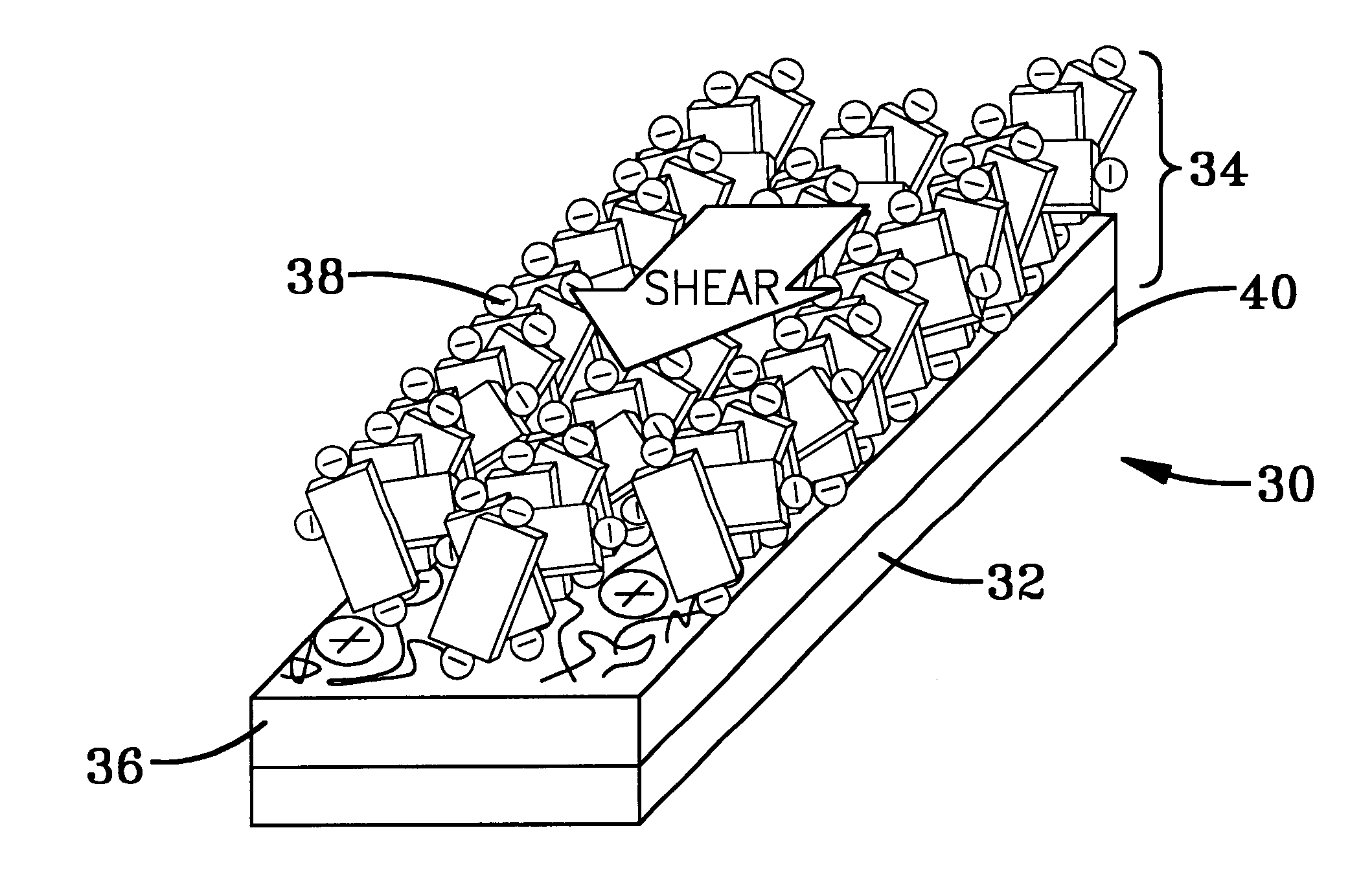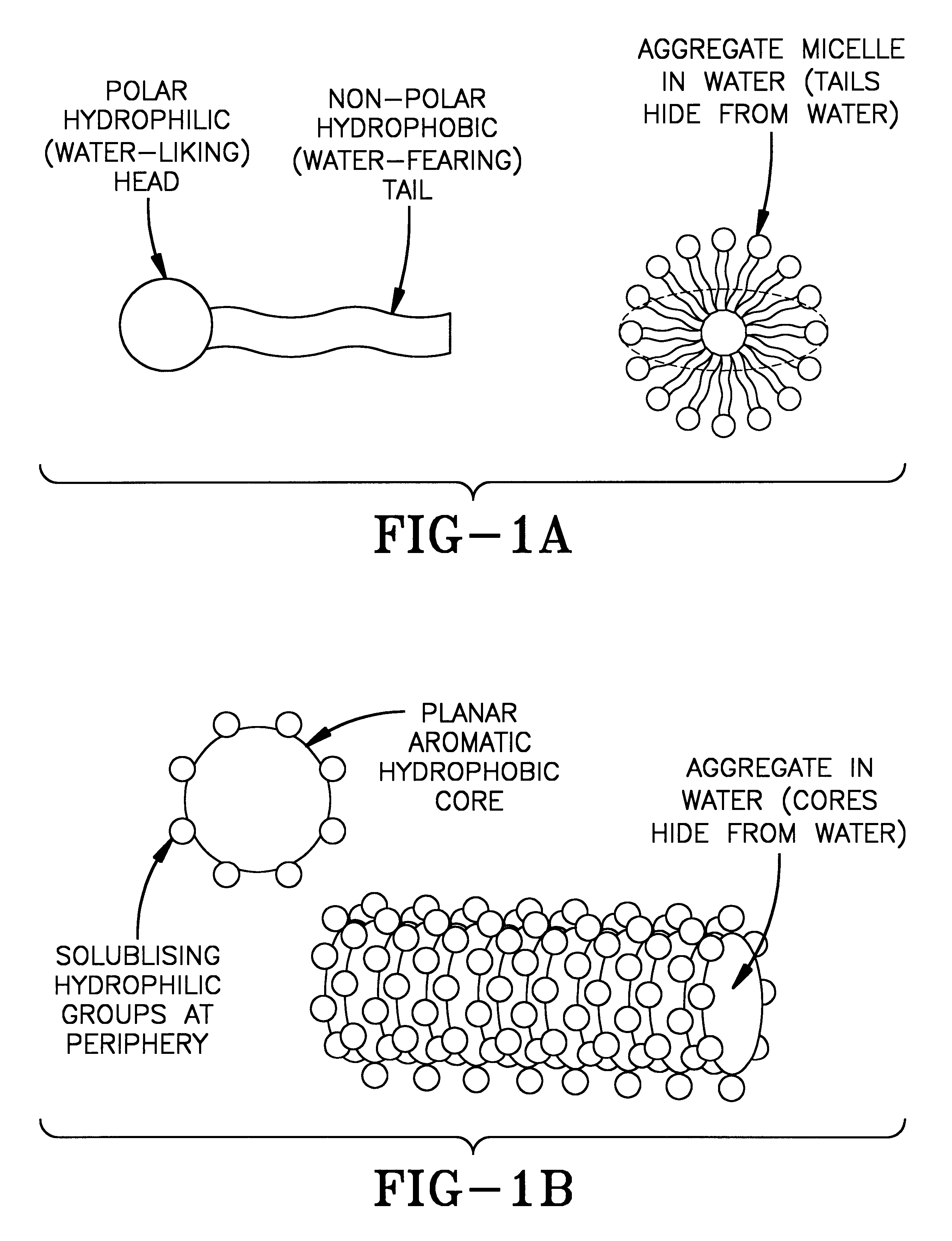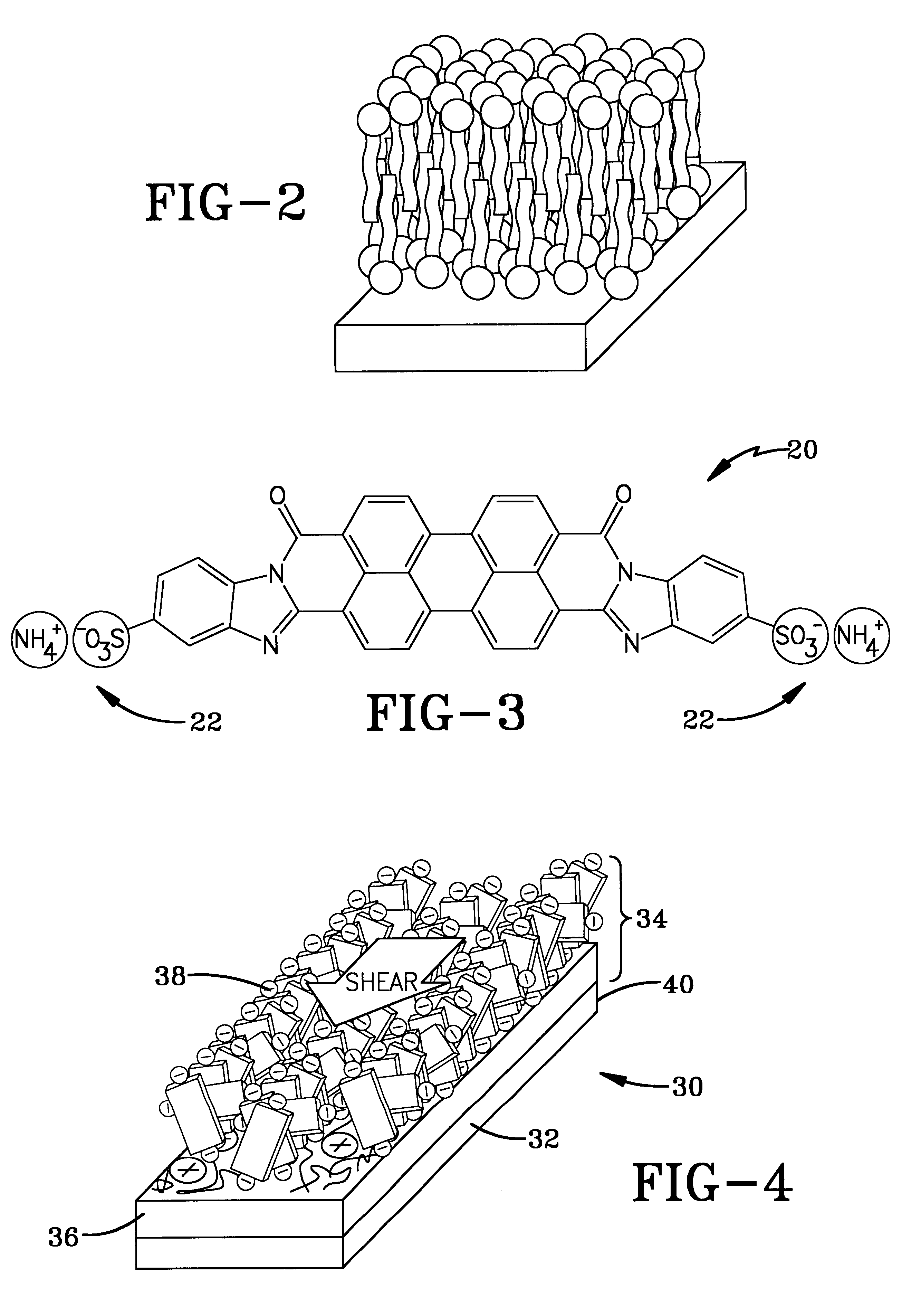Alignment of lyotropic chromonic liquid crystals at surfaces as monolayers and multilayered stacks
a technology of chromonic liquid crystals and surfaces, applied in the direction of cellulosic plastic layer products, instruments, polarising elements, etc., can solve the problems of lyotropic liquid crystals being more difficult to align in the plane of the substrate, if possible at all, and not being able to achieve the effect of aligning the surfactan
- Summary
- Abstract
- Description
- Claims
- Application Information
AI Technical Summary
Benefits of technology
Problems solved by technology
Method used
Image
Examples
example 2
Proof of Polyion Alignment Layer
Other investigations into the possibility of using the polyion layers as an alignment layer were made. Using a rubber squeegee, the polyion solution was sheared onto the substrate in a back and forth motion. Presumably, the polymer backbones of the polyion would align in the flow direction and adsorb onto the substrate anisotropically. This in-turn would provide some sort of anisotropic alignment layer for the dye as it was applied to the substrate. Three substrates were made with the "anisotropically" adsorbed PDDA in the same manner as described in Example 1. One substrate was dipped into an isotropic solution of V20 (see FIG. 12). The next substrate was dipped (normal to the surface of the glass--so as not to introduce any preferential direction) into a nematic solution of V20 (see FIG. 13). The third substrate was sheared with a nematic solution of V20 (see FIG. 14). It was found that the isotropic solution of dye was not absorbed anisotropically....
example 3
COUNTER EXAMPLE 3
Necessity of the Liquid Crystalline Phase
It is important to note that the phase of the dye and the deposition method are of course, crucial to the resulting film. In order to achieve orientation of the LCLC, it should be sheared onto the polyion substrate while in the liquid crystalline phase. A sample was created in the same manner as Example 1; however, the isotropic phase of V20 was sheared onto the polyion substrate, rather than the liquid crystalline phase of V20. In FIG. 11, it is obvious that this substrate exhibits no anisotropy in the absorption of light. The dye, being pleochroic in nature, will exhibit anisotropy in the absorption of light only after it has been uniformly oriented. Therefore, the dye must be in an elongated aggregate nematic phase so that shear flow can induce alignment.
example 4
COUNTER EXAMPLE 4
Proof of Dye Adsorption onto Oppositely Charged Substrate
An experiment was devised in which the surface layer of polyion was of the same charge as the dye to illustrate that the dye is adsorbed onto the polyion substrate, rather than dye diffusion into the polymer as the polymer swells. All spectroscopic measurements were made with a Perkin-Elmer Lambda 18 spectrometer in the visible spectrum. In this experiment, four samples were prepared from a glass substrate, which was cleaned as described in Example 1. Note that all of the samples were thoroughly rinsed with ultrapure water after the adsorption had taken place in order to wash off excess material. The substrate is prepared as in Example 1 above, where, after adsorbing a layer of PDDA, the substrate is dipped either into a 3 mg / mL aqueous solution of Poly(sodium 4-styrenesulfonate) (PSS; MW=1M, Aldrich) for 20 minutes to adsorb a negative polyion layer or an 8% aqueous solution of V20 to adsorb a negative dye la...
PUM
| Property | Measurement | Unit |
|---|---|---|
| height | aaaaa | aaaaa |
| length | aaaaa | aaaaa |
| specific resistance | aaaaa | aaaaa |
Abstract
Description
Claims
Application Information
 Login to View More
Login to View More - R&D
- Intellectual Property
- Life Sciences
- Materials
- Tech Scout
- Unparalleled Data Quality
- Higher Quality Content
- 60% Fewer Hallucinations
Browse by: Latest US Patents, China's latest patents, Technical Efficacy Thesaurus, Application Domain, Technology Topic, Popular Technical Reports.
© 2025 PatSnap. All rights reserved.Legal|Privacy policy|Modern Slavery Act Transparency Statement|Sitemap|About US| Contact US: help@patsnap.com



